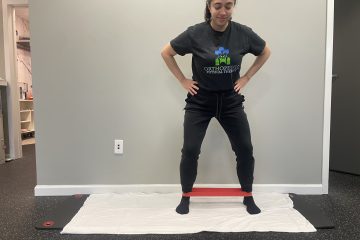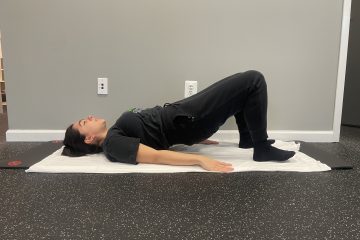
It seems every other day, we are seeing a new patient diagnosed with vaginismus, many of whom are in their late teens and early twenties.
I remember watching Sex Education on Netflix, a show about British teens exploring sex and their sexuality, and feeling pleasantly surprised to see an episode where a character opens up about her vaginismus, going so far as to mention vaginal dilators! As a pelvic floor fiend and manager of a Pelvic Health Physical Therapy clinic, I was pretty darn excited about that plotline.
Today, we’ll delve deeper into what exactly is vaginismus and how pelvic floor physical therapy can help.
Let’s explore!
What is vaginismus?
Vaginismus is a painful, involuntary reaction of the pelvic floor muscles in response to touch or penetration. It is an automatic reaction, often, though not always, related to fear and/or past trauma. This response can happen with tampon use, fingers, toys, a medical exam (speculum), and/or a penis.
There are two types of vaginismus: primary and secondary vaginismus.
Primary Vaginismus, also called “Lifelong Vaginismus,” happens every time something is entered into the vaginal canal. In these cases, the individual has never been able to comfortably enter something. Don’t worry though, this need not be lifelong!
With Secondary Vaginismus, also called “Acquired Vaginismus,” the individual was previously able to have penetrative intercourse or insert things into the vaginal canal, but then it became painful and/or impossible to do so.
Individuals who have experienced vaginismus often describe it as “hitting a wall” or “being closed.” Some people also mis-refer to it as a “small” or “too tight” vagina.
What can you do to treat vaginismus?
- Pelvic Floor Physical Therapy
- Cognitive Behavioral Therapy (CBT)
- Meditation and/or yoga
- Prescribed topical creams, suppositories, medications, and/or injections
What do we do to treat vaginismus in Pelvic Floor Physical Therapy?
- Collaborate with your pain doctor and/or mental health therapist to give you the best holistic care
- Manual work to relax and downregulate the nervous system
- Diaphragmatic breathing (to relax the nervous system AND the pelvic floor muscles)
- External lengthening and desensitization of the pelvic floor muscles
- Training on dilator use for internal lengthening
- Stretches and mobility work
- Re-education of pelvic floor muscles to teach them how to relax with insertion/penetration
- A joint education session with partner if applicable
Treating vaginismus requires that we address the physical and the psychological components together. We take a pain science approach to treatment because the body remembers trauma. We have to desensitize and reframe in order to truly solve vaginismus.
If you suffer from vaginismus, either primary or secondary, it may feel like your body just can’t work the way you want it to and never will, but there IS a resolution for this problem and you CAN use your body the way you desire. Let us help ❤ Schedule your FREE 10-minute consult call today ✨
Be empowered in education,
OrthoPelvic Physical Therapy


